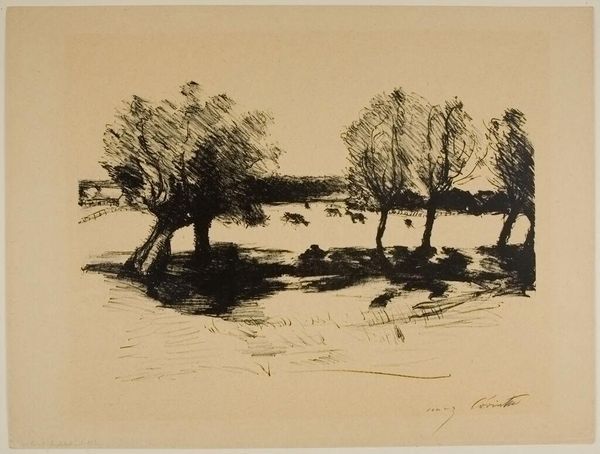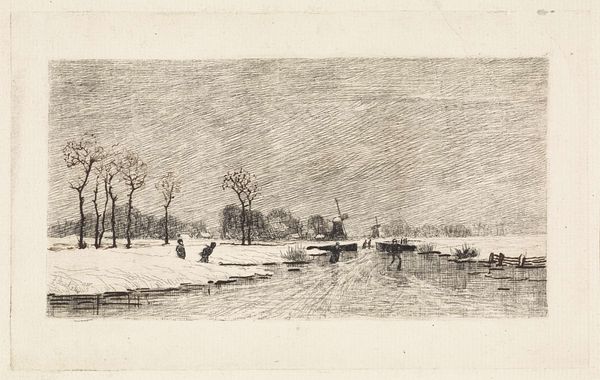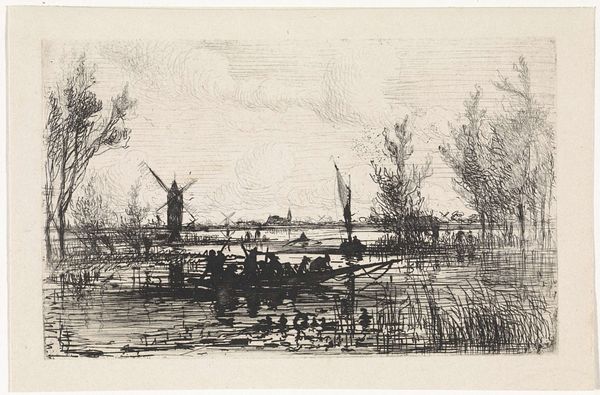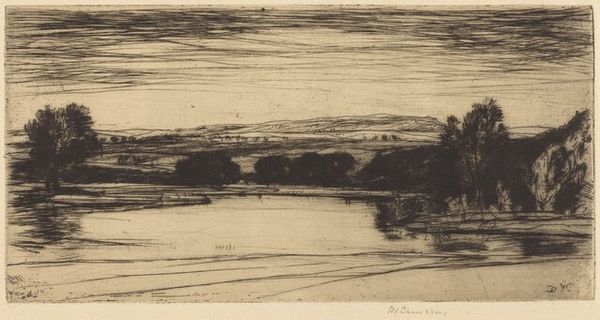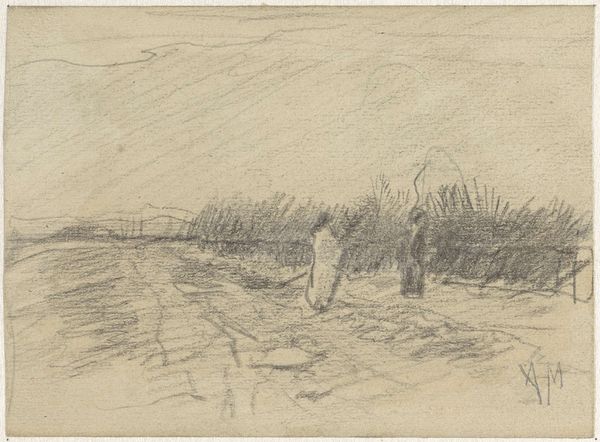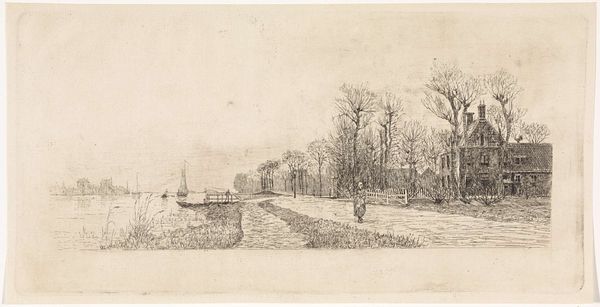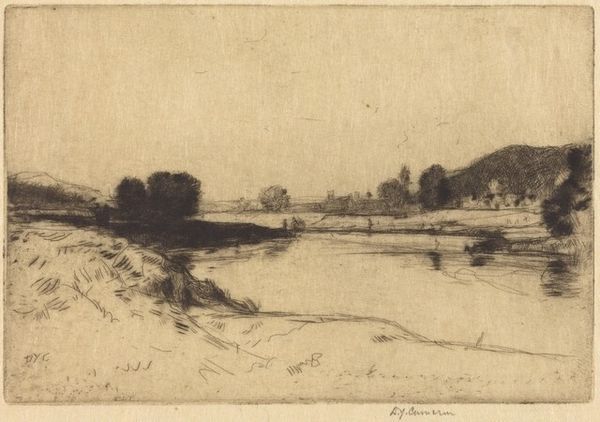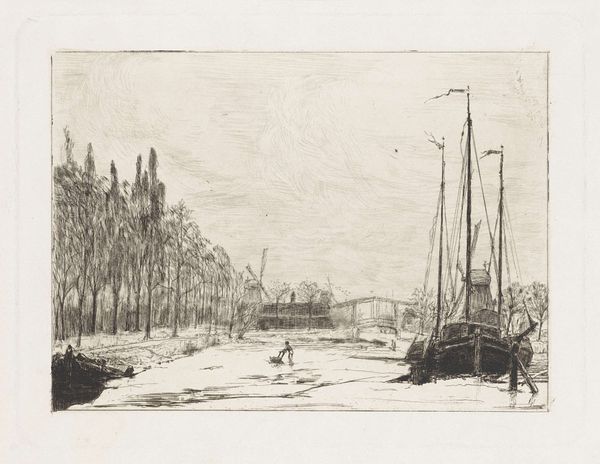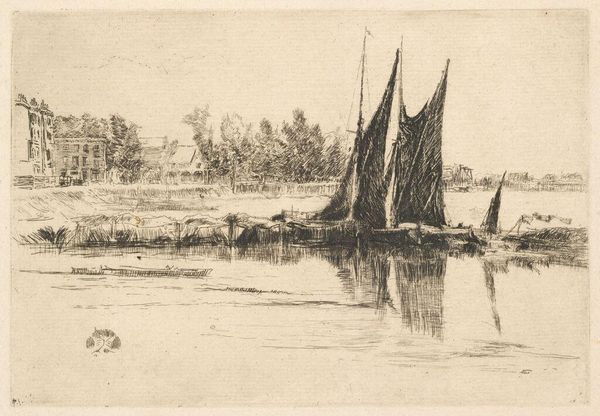
print, etching
# print
#
etching
#
landscape
#
figuration
#
realism
Dimensions: height 122 mm, width 196 mm
Copyright: Rijks Museum: Open Domain
Curator: Before us we have “Skaters in a Dutch Landscape,” attributed to Elias Stark, and possibly created in 1887. The artwork, residing here at the Rijksmuseum, is a print crafted via etching. Editor: My first impression is a starkness…it’s almost monochromatic. The etching seems quite detailed though; you can practically feel the frigid air and hear the whoosh of skates on the ice. Curator: Absolutely. Stark utilizes the etching process to render a very specific vision of the Dutch winter. Look at the broader historical context: the late 19th century in the Netherlands saw increasing industrialization but also a longing for traditional, rural scenes. Images like these become ways to preserve a specific national identity and its perceived connection to the land. Editor: That makes me consider the actual labour behind its creation. Etching demands careful labor. The artist would manipulate materials, acid to corrode lines, crafting each print by hand…each impression would subtly differ based on pressure, timing and ink. The windmills, a symbol of the Dutch landscape and a prominent visual element here, themselves point back to systems of labor. Curator: Exactly! And the very act of portraying leisurely skating emphasizes certain societal structures. The relative affluence to enjoy skating, the ability to perhaps buy or rent skates – even something seemingly apolitical reflects social strata. Furthermore, landscape art, in general, particularly in this period, serves to construct national narratives, suggesting who belongs and who doesn’t. Editor: The scale fascinates me. Intimate prints made affordable artworks, able to adorn the walls of a common home. Its form enables a very specific mode of consumption. Were people able to access, understand, or challenge the implied societal messaging you mention? Curator: It's a pertinent question! These prints contributed to a shared visual culture and its inherent narratives, however viewers can undoubtedly engage with these visuals actively, filtered through personal lived experience and socio-economic awareness. Editor: This perspective has me now looking at the work not merely as a scene but as a piece produced by materials and process, imbued with complex socioeconomic stories. Curator: A wonderful synthesis of technique, materiality, and sociocultural significance in interpreting artwork such as Stark’s print before us.
Comments
No comments
Be the first to comment and join the conversation on the ultimate creative platform.

